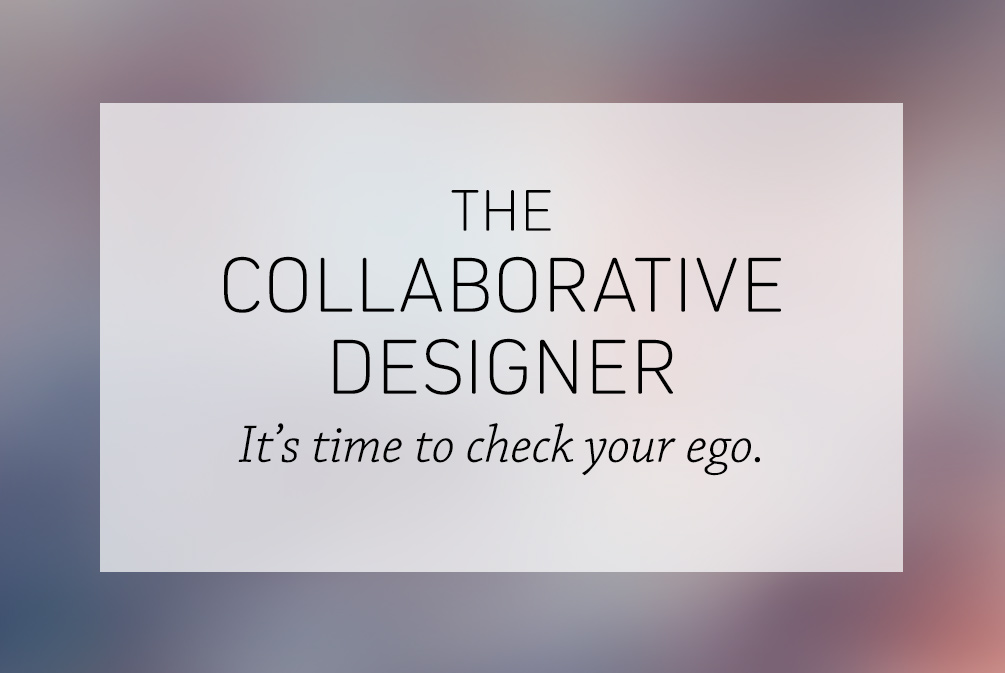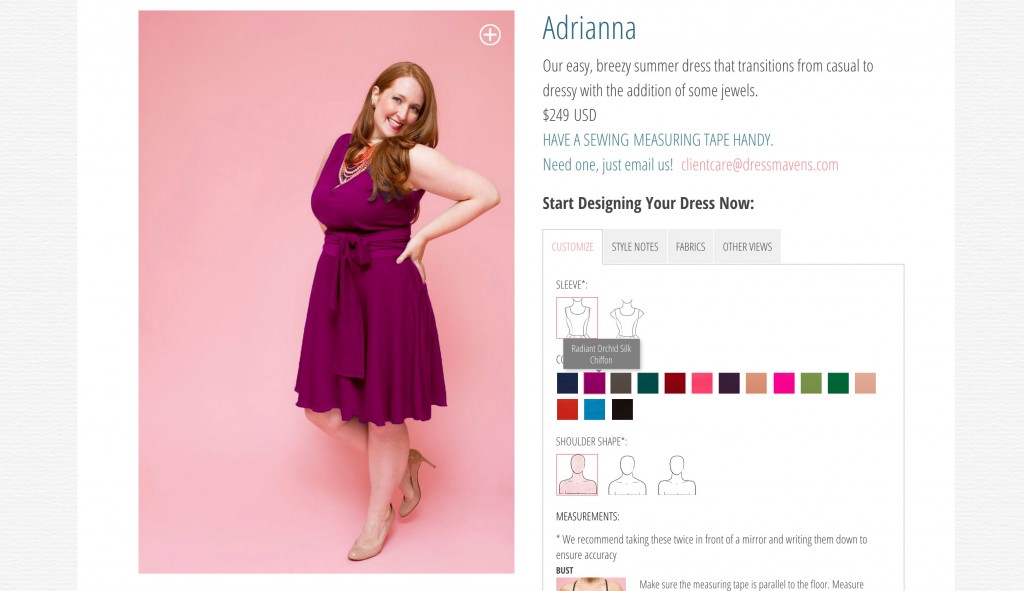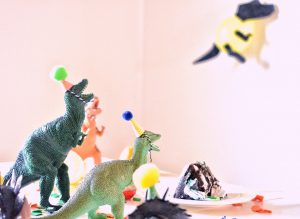
If you want to survive as a designer in the new digital economy, you must take a collaborative role with your clients.
Your job is to assist your clients in finding the most effective solution for them and their business.
Over the years, I’ve worked with a lot of designers, and seen behind the scenes of a lot of client projects. One pattern that I’ve seen pop up again and again (and make no mistake, I’ve been guilty of it myself) is the designer becoming frustrated with their clients for making design-related requests. “But I’m the expert! Why is the client hiring me if they won’t let me do my job?”.
The designer of the new economy must act as a facilitator, not dictator.
A facilitator is someone who helps a group of people understand their common objectives and assists them to plan how to achieve these objectives. (Wikipedia)
“Designer knows best” doesn’t work anymore (I’m not sure it ever did?), because no matter how sweet your design skills, you really don’t know what your client’s audience wants without doing your research. David Holston puts it best in his book The Strategic Designer:
“Clients, once thought of as the spoilers of great design, are now seen as the source of creative ideas and an integral part of developing meaningful design concepts.”
It’s essential to bring your clients’ insights into your work together if you want to contribute to meaningful work that solves real problems for real people. Your role is to facilitate the success of your client.
It’s time to check your ego.
Now of course, it’s true that most of the time your clients aren’t trained in basic design principles. And yes, there are times where a client will make requests for aesthetic changes that don’t do their business any favours. This does happen, and can be frustrating, but you have a few options when this happens:
- Educate yourself and your client. Find evidence that supports the decision/request, or shows why it might be hindering their success, and make the case. Make sure your client understands that you have their best interests in mind, but be open to what the solution could look like.
- Open your mind. Sometimes clients ask for something specific because they can’t articulate why they feel something isn’t quite working. Can you get a sense for what the client is really asking for? Is there a way to demonstrate an alternative based on their feedback that still supports their goals? There may be a solution that comes from your co-creation when you let go of your attachment to the specific outcome.
If you can’t show your client why their request is foolish, risky, or bad for their business, and that their audience or users don’t want what the client has requested, then your job is to find the best possible way to execute the request in a way that will serve the client’s audience as successfully as possible. In other words? Suck it up, princess. Design is not about your ego; great design solves problems and creates a pleasant experience for users, and you are most often not the target audience for your own designs.
11 years after leaving design school, I still have to implement design decisions I don’t 100% agree with. Design is collaborative and messy. There are clients, stakeholders, users, designers and other experts that each have a stake in decision making, and the designer doesn’t always have the final say. It’s ok to loosen your grip on the outcome, because it’s not actually about you.

The designer doesn’t always know best.
I’ll admit I was guilty of believing that the designer always knew best. I used to shake my head or roll my eyes to myself if the client made what I felt was a “silly” request that would “hurt” the beautiful design I had created. They just don’t understand design, I would think.
What was missing however, was the perspective of the client’s audience and ideal target market. User experience insights. Design research. Inquiry.
What was missing was getting to the root of why. What was the client really asking for, and why? What does the client’s audience really want and need? How is this design supporting the client’s business goals, and not just my own desire to try out a new style or technique?
Arbitrary decisions would be made based on personal preferences, assumptions, and what seemed trendy at the time. I hadn’t yet been introduced to market research and testing, user experience design, business strategy, digital marketing, user experience, and more. Jacob Gube talks about how user experience has changed the design industry drastically in the last few years alone:
Before our clients (and we) understood the value of user-centered design, we made design decisions based on just two things: what we thought was awesome and what the client wanted to see. We built interaction based on what we thought worked — we designed for ourselves. The focus was on aesthetics and the brand, with little to no thought of how the people who would use the website would feel about it. There was no science behind what we did. We did it because the results looked good, because they were creative (so we thought) and because that was what our clients wanted.
The design process needs to move away from being about the designer’s ego and personal aesthetic preferences, and into creating real value and (measurable) results for clients.
In the case of the Dress Mavens redesign, collaboration involved the Dress Mavens (Nadine and Paulina), as well as further expertise via Phil Caines to help us with Search Engine Marketing and user testing. This user testing also meant helping us challenge our assumptions of how people were actually using the site.


We conducted user testing to help us tweak everything from navigation and choice of language to the restructuring of page layouts and calls to action to be more clear. Getting real live videos of people using the products you’ve designed is seriously eye opening, and a great way to start getting your ego out of the way.
When you become a true collaborator with your clients, are open to co-creating, and can resist the urge to operate purely on your own ego or assumptions, you position a project for success.
Five ways to ease into a more collaborative role with your clients.
- Ask more questions. Ask better questions. Make sure you are getting to the root of what your clients really want, and even more importantly, what their audience really needs. What is the underlying desire? What might they be open to? Open up a dialogue, and be willing to ask more questions.
“My working definition of a design process is: A collaboration with the people one wishes to serve, to co-create better outcomes. And every design process – be it teaching, coding, architecture, or what people in the startup space call “achieving product-market fit” – requires creativity, empathy, and deep curiosity. Literally or figuratively, you are having a conversation with the people you want to serve, to discover who they are and how you can help them. You’d better bring your best questions to that conversation.” — Lauren Bacon, Curious for a Living.
- Check your assumptions. Don’t assume that you know what your client wants, and don’t assume that you know what is best for their audience without doing research. Find evidence to support your intuition.
- Check your gut. Understand and accept that your design projects are not just your portfolio pieces, they are someone elses’s business tool! Your goal should be to meet user’s needs, not your own. The sooner you can separate your ego from your design work, the better off you will be (I promise!).
- Include your client. Clients often want to feel a certain level of control. If you aren’t bringing your client into your process, they might be getting nervous, and feel the need to micro-manage (because you haven’t built enough trust). Show them your thinking, your research, and your insights so they can understand how you arrived at your proposed solution. For me this means showing my clients prototypes and mockups well before they see any final designs. I make sure they are involved in the decision making process from the beginning. This used to be scary, but these days I know my projects are always better when I co-create.
- Acknowledge your client. People want to be seen, heard, and understood. Acknowledging your client both builds trust and makes them feel encouraged. Your client knows their business better than you do, so make sure you acknowledge that they have a lot to contribute to the project (which shouldn’t happen in the isolation of your design cave).
“In the face of increased competition, collaboration is one advantage designers have when working with clients. Only through real human interaction and collaboration can design position itself to go beyond the realms of commodity” — Ellen Shapiro
Collaboration will help you move past your comfort zone, become a stronger designer, and help you bring more value to your projects because you’ll have even more context and insight. I urge all designers to practice adopting a more collaborative mindset; you might just find that there’s room to make your projects even better. All it takes is an open mind, and some kick-ass clients.
Collaboration for the win.
________________________________
Did you enjoy this post? I teach designers how to think like strategists over at Digital Strategy School.



Leave a Reply